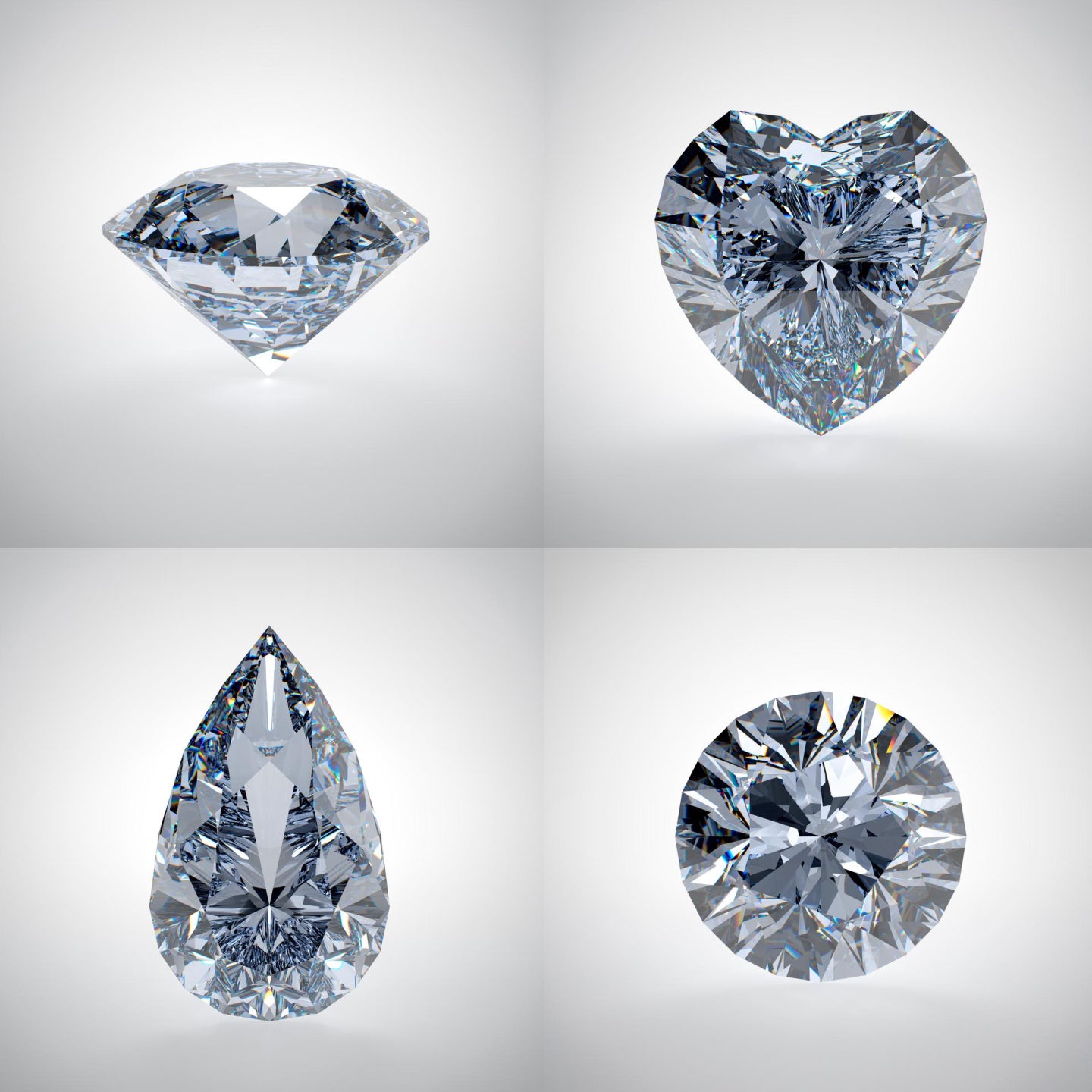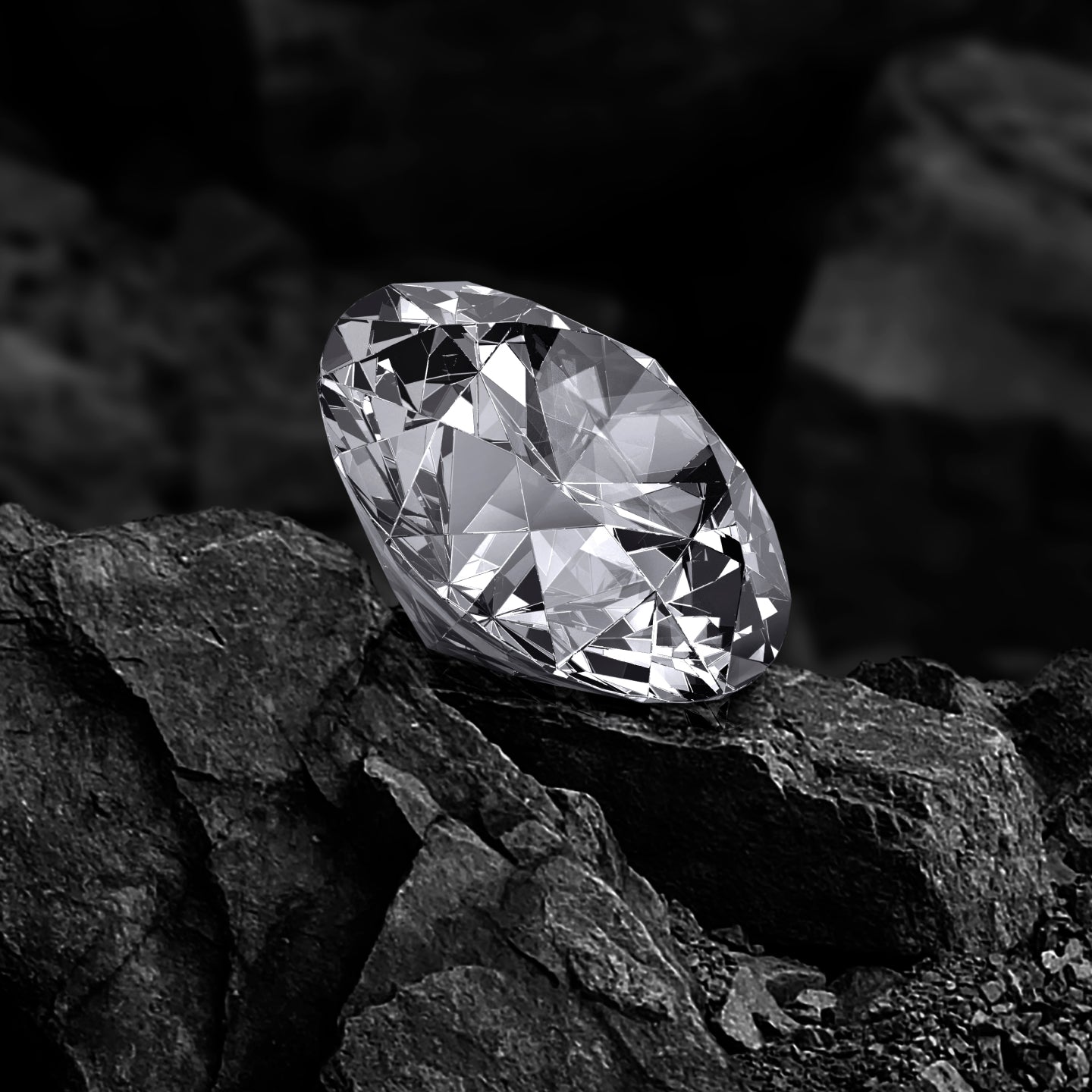
Learn
At Smrti, we honour the esteemed tradition set by the Gemological Institute of America (GIA), embracing the 4Cs—Colour, Clarity, Cut, and Carat—to define the exceptional quality of our stones. Emulating the meticulous approach set by Smrti, we implement a rigorous two-tier selection process that begins with meeting these global standards.
Beyond the objective 4Cs assessment, our experienced gemologists conduct a thorough visual inspection, where the unique beauty and character of each diamond are scrutinized. This holistic examination ensures that every selected stone not only fulfills the scientific measures of excellence but also possesses that ineffable allure—the soulful essence that sets a Smrti diamond apart.
In this pursuit of perfection, Smrti stands alongside the world’s most distinguished jewelry houses, offering stones that exemplify unmatched quality for both our centerpiece designs and intricate pavé settings.

Clarity
At Smrti, clarity stands as a testament to nature’s artistry, a crucial element that defines the perfection of our diamonds. We delve into the heart of each gem, ensuring that it exhibits an immaculate canvas, free of inclusions and blemishes to the naked eye.
Our stringent selection process ensures each diamond achieves a clarity grade that meets or surpasses industry benchmarks, focusing primarily on those rated between FL (Flawless) and VVS2 (Very Very Slightly Included). This narrow spectrum guarantees that our diamonds possess an inner purity, providing a crystal-clear window into the depths of their natural brilliance.
Only diamonds that withstand a rigorous examination under 10x magnification and reveal no visible flaws are chosen for our collection, reinforcing Smrti Diamonds’ unwavering commitment to offering jewels that embody clarity in its most refined form.
Clarity Scale
Flawless,
Internally Flawless
Very, Very Sligntly
Included
Very Slightly
Included
Slightly
Included
Included

Cut
At Smrti, the artistry of the cut is paramount. We recognize that the cut determines the symphony of light and sparkle in a diamond, and it is this that breathes life into the stone. Our masterful cuts range from the timeless brilliance of the round cut to the innovative and contemporary shapes such as oval, marquise, pear, heart, emerald, princess, and cushion.
Every facet is meticulously crafted to ensure that the interplay of light within the diamond achieves the most captivating dance of brilliance. We select only those cuts that are graded “excellent” and “very good,” a testament to our commitment to exceptional quality. Our experts are devoted to revealing the innate beauty of each diamond, achieving a balance of proportions that enhances its inherent fire and ensuring the polish and finish bring forth its fullest potential. With each cut, Smrti promises not just a stone, but a mesmerizing spectacle of light and elegance.
Shape Chart
Emerald
Round
Princess
Marquise
Oval
Pear
Heart

Carat
At Smrti, the carat weight of our diamonds is carefully considered to assure a harmonious balance between grandeur and grace. Our collection features central stones starting from a minimum of 0.30 carat, ensuring a presence that’s felt yet refined. Each carat, representing 0.20 grams, is meticulously calibrated to contribute to the diamond’s overall allure and magnificence.
We understand that carat weight is more than just a measure of size—it’s a symbol of the momentous occasions our diamonds commemorate. Whether it’s a delicate piece that whispers elegance or a bold statement that echoes through generations, our diamonds are selected to embody the significance of every celebration, with a carat weight that perfectly complements the design and intention behind each bespoke creation.
Carat Chart

Colors
At Smrti, we understand that the true essence of a diamond’s allure is often held in its purity of colour. Adhering to standards of unparalleled excellence, we meticulously select diamonds that reflect the highest colour grades, ensuring each gem’s rarity and intrinsic beauty.
Our collection boasts stones primarily within the D (exceptionally colourless) and E (colourless) grades, recognizing that these are among the most coveted and esteemed classifications in the industry. For our center stones, the spotlight of our creations, we exclusively choose diamonds within the D and E categories, reserving these superior gems for pieces where their unmatched brilliance can be fully appreciated.
This commitment to colour excellence places Smrti in the echelon of luxury jewellers who prioritize not only the technical quality but the visual splendour of their diamonds, crafting pieces that illuminate with an ethereal white radiance.
Table of Color grades
Coloriess
Near Coloriess
Faint Yellow
Very Light Yellow
Light Yellow
Comprehensive FAQ on Lab-Grown and Natural Diamonds
How are natural diamonds sourced?
Natural diamonds are extracted from the Earth, typically from kimberlite pipes using mining methods. This process involves significant excavation and can impact the environment.
What is the process for creating lab-grown diamonds?
Lab-grown diamonds are crafted using high-tech methods that simulate the conditions under which natural diamonds form. The primary methods are High Pressure High Temperature (HPHT) and Chemical Vapor Deposition (CVD).
What distinguishes lab-grown diamonds from natural diamonds?
Lab-grown and natural diamonds are chemically identical, both made of carbon. The difference lies in their origins: natural diamonds are formed over billions of years beneath the Earth's surface, while lab-grown diamonds are produced in controlled laboratory environments over a much shorter period.
Are lab-grown diamonds visually different from natural diamonds?
Visually, lab-grown and natural diamonds are indistinguishable to the naked eye. Both types share the same sparkle and brilliance. Only through professional examination with specialized tools can the subtle differences be detected.
What are diamond growth patterns, and how do they differ between lab-grown and natural diamonds?
Growth patterns in diamonds, which are the structures formed during crystallization, vary between the two types. Natural diamonds typically have irregular and complex patterns due to natural formation processes, while lab-grown diamonds exhibit more uniform patterns characteristic of controlled production.
Are the inclusions in lab-grown diamonds different from those in natural diamonds?
Inclusions, or internal characteristics often seen as imperfections, can differ between lab-grown and natural diamonds. Natural diamonds may contain a variety of inclusions formed naturally, while lab-grown diamonds may have different types of inclusions, depending on the production method.
Do lab-grown and natural diamonds have the same durability?
Yes, both lab-grown and natural diamonds possess the same level of durability. They are the hardest known materials, ideal for long-lasting jewelry.
Can lab-grown diamonds receive the same certification as natural diamonds?
Lab-grown diamonds undergo the same rigorous grading and certification processes as natural diamonds. They are evaluated based on cut, color, clarity, and carat, ensuring their quality is thoroughly assessed.
What ethical factors should be considered when choosing between the two types of diamonds?
Ethical considerations include the environmental impact and potential human rights issues associated with diamond mining. Lab-grown diamonds offer a more ethical alternative by reducing environmental impact and avoiding the issues related to diamond mining.
How do lab-grown and natural diamonds impact sustainability?
Lab-grown diamonds are generally more sustainable, as their production requires less energy and avoids the environmental degradation associated with mining. Natural diamond producers are increasingly adopting more sustainable and ethical practices.
